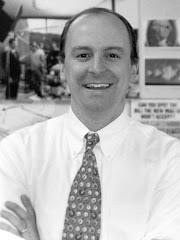Last week we talked about how you should never, never, never, never end a presentation with a Q&A. The next logical question is “how should a presentation end?” With a Call To Action (CTA).
CTA is a term borrowed from the advertising world. Believe it or not, every single commercial, magazine ad, coupon, web page design, etc. has some sort of CTA.
A Call-To-Action is what the audience should do or think about a product or service.
“Just do it.”
“Drivers Wanted.”
“The 7-Layer Burrito is now only $1.29.”
You get the idea.
Advertisers and good presenters know that the CTA is the last thing the audience will hear and it’s the one thing they’ll most likely remember. Remember your Psych 101 class in college? The recency effect? When given multiple pieces of information, people tend to recall the last thing they hear. So why not make the last thing they hear, the most important thought, request or direction of your speech?
It’s fairly easy to come up with a good CTA if the goal of your speech is for the audience to literally take some course of action. Do you want them to approve a budget? Adopt a new strategic direction? Bless the Q4 advertising plan?
Or, do you want the audience to stop doing something? Reduce mistakes? Less waste?
Crafting an effective CTA requires a little more effort and when you’re just conveying information or providing an update. Just boil the essence of your speech down to a single sentence that encapsulates the purpose of your speech.
Do you want your audience to simply be aware of some new regulations? What are the regulations and what impact will it have on them? The shorter the better.
Are you providing a monthly update? What is the one thought or idea you want your listeners to walk away with? What should they keep top-of-mind when they’re back at their desks?
Does your audience simply need an attitude adjustment? Without being heavy handed, what inspirational thought, quote or number could you leave them with? What will make them pause and think about where their heads are?
For example, I conclude nearly every one of my “Presenting with Excellence” seminars by reminding my audience what they just learned. I tell them, “Anyone can become a great speaker because great speakers are made, not born. You’re off to a great start. Keep it up.”
Does the audience start applauding? Sometimes. Is there a group hug? No. Do they throw roses on the stage? No. (But I wish they would.)
A good Call-To-Action is a great way to end. And a great ending is the best way for your audience to begin the rest of their day.
Time to Hit Your Stride…
Your Turn #1:
Take the goal or purpose of your next presentation and repurpose it to function as a CTA.
Your Turn #2:
Set up your CTA by planting the seed in your audience’s mind prior to Q&A. Try saying this, “Before I make my final point [CTA], what questions do you have about my presentation?” Now your listeners are prepared for a few final remarks after your Q&A.
Rhetorically yours,
Steve Hughes
Speaker - Trainer - An Autobot In Disguise
Saturday, July 7, 2007
Subscribe to:
Post Comments (Atom)

No comments:
Post a Comment